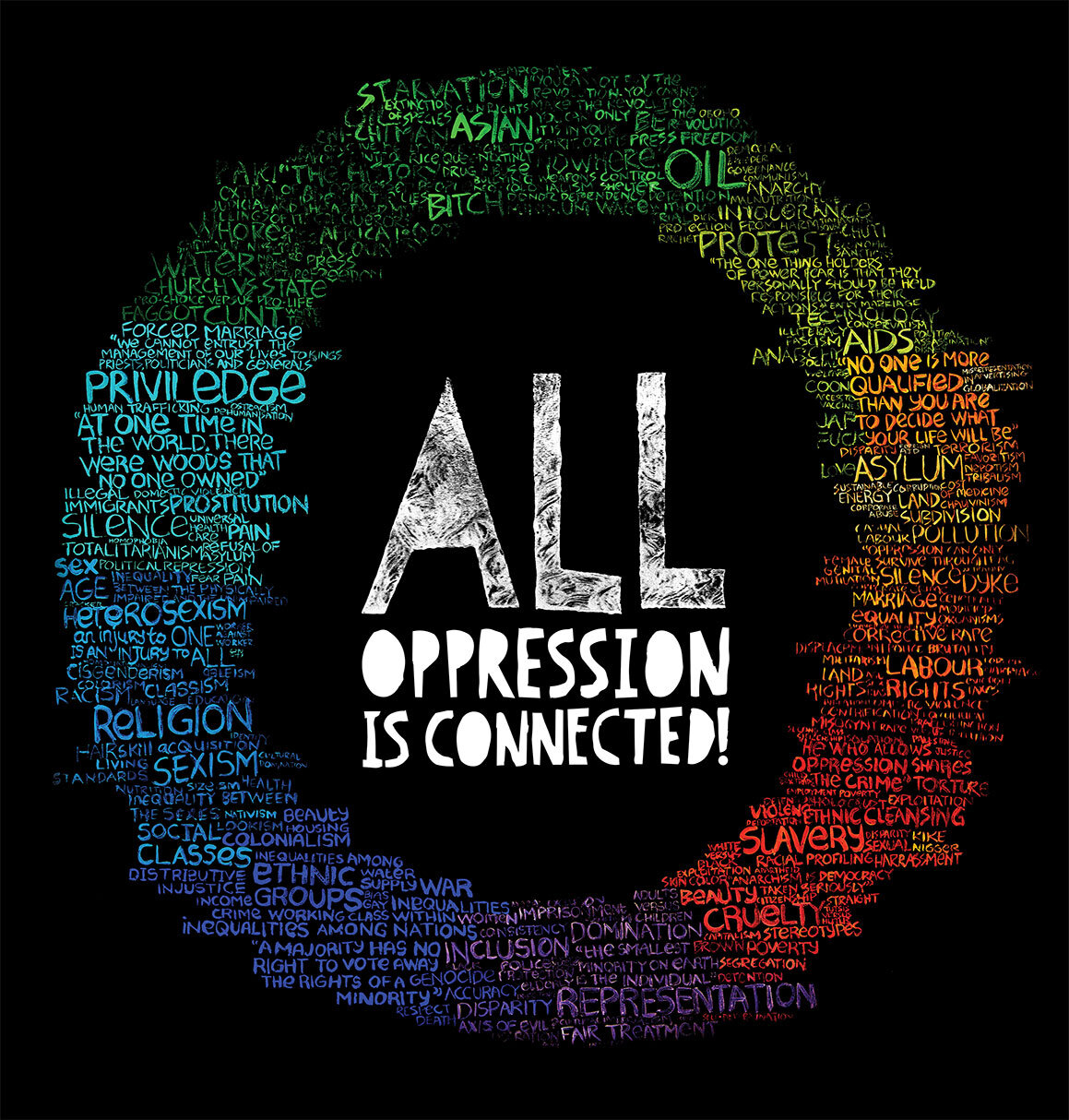Intersectionality

“The critical race scholar who references postmodernism most explicitly in her work … is Kimberlé Crenshaw, a founder of critical race Theory and the progenitor of the concept of intersectionality. Intersectionality began as a heuristic – a tool that lets someone discover something for themselves – but has long been treated as a theory and is now describes by Crenshaw as a ‘practice’. …
She … uses the metaphor of a roadway intersection to examine the ways in which different forms of prejudice can ‘hit‘ an individual with two or more marginalized identities. … This … approach allowed for ever more categories of marginalized identity to be incorporated …, adding layer upon layer …
[Her 1991 essay] ‘Mapping the Margins’ provides the means: openly advocating identity politics over liberal universalism, which had sought to remove the social significance of identity categories and treat people equally regardless of identity. …
The number of axes of social division under intersectionality can be almost infinite – but they cannot be reduced to the individual. (People often joke that the individual is the logical endpoint of an intersectional approach that divides people into smaller and smaller groups – but this misunderstands the fundamental reliance on group identity. Even if a person were a unique mix of marginalized identities … she would be understood through each and all of these group identities, with the details to be filled in by Theory. …). …
However, there is nothing complex about the overarching idea of intersectionality … Nothing could be simpler. It does the same thing over and over again: look for the power imbalances, bigotry, and biases that it presumes must be present and pick at them. It reduces everything to one single variable, one single topic of conversation, one single focus and interpretation: prejudice … Theory … always assumes that, in every situation, some form of Theoretical prejudice exists …
All this ‘sophistication’ keeps intersectionalists busy … under an overarching metanarrative of Social Justice, which seeks to establish a caste system based on Theorized states of oppression. …
[This] is markedly different from the activism for universal human rights that characterized the civil rights movements … [which] sought and seek to equalize opportunities by criminalizing discrimination, remedying disenfranchisement, and defeating bigotry by making prejudice on the grounds of immutable characteristics socially unacceptable. …
Critical race Theory and intersectionality are characterized by a great deal of divisiveness, pessimism, and cynicism. … [Its] hallmark paranoid mind-set, which assumes racism is everywhere, always, just waiting to be found, is extremely unlikely to be helpful or healthy for those who adopt it. …”
aus: Helen Pluckrose / James Lindsay: Cynical theories, Durham, NC: Pitchstone 2020, S.123-129.
Abb.: Jim Chuchu, Mural, 2014, im Internet.
05/23
Leave a Reply
You must be logged in to post a comment.